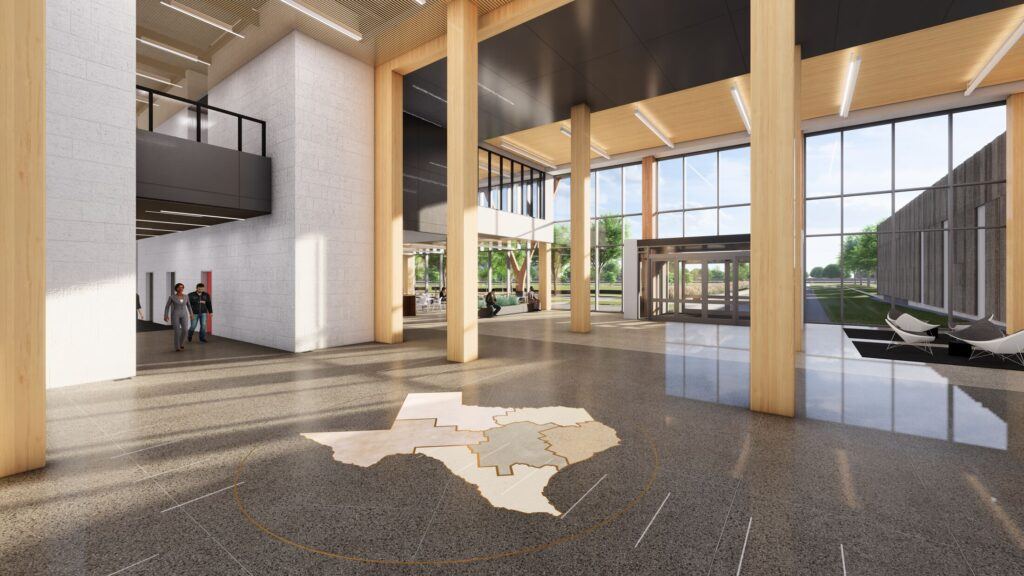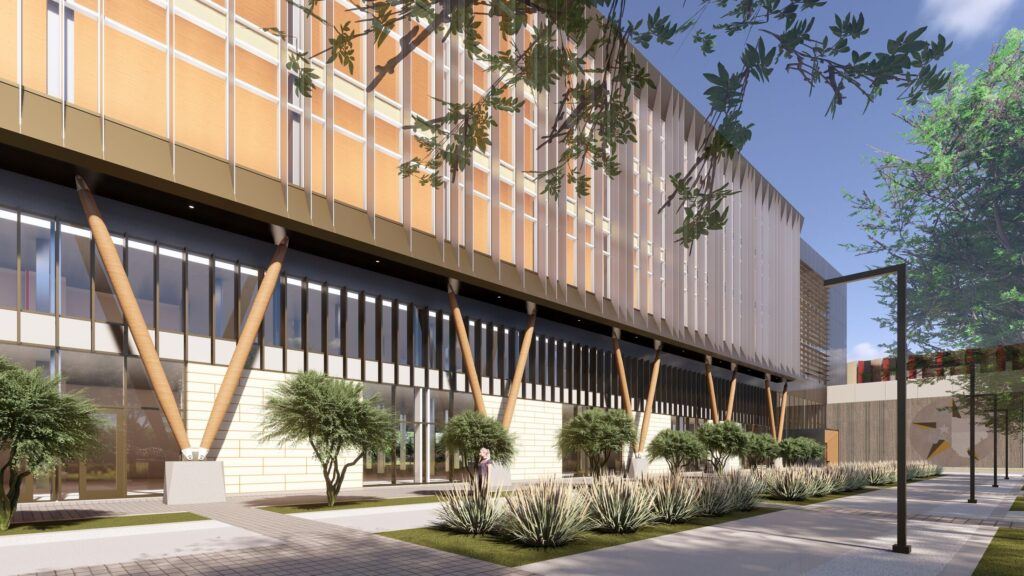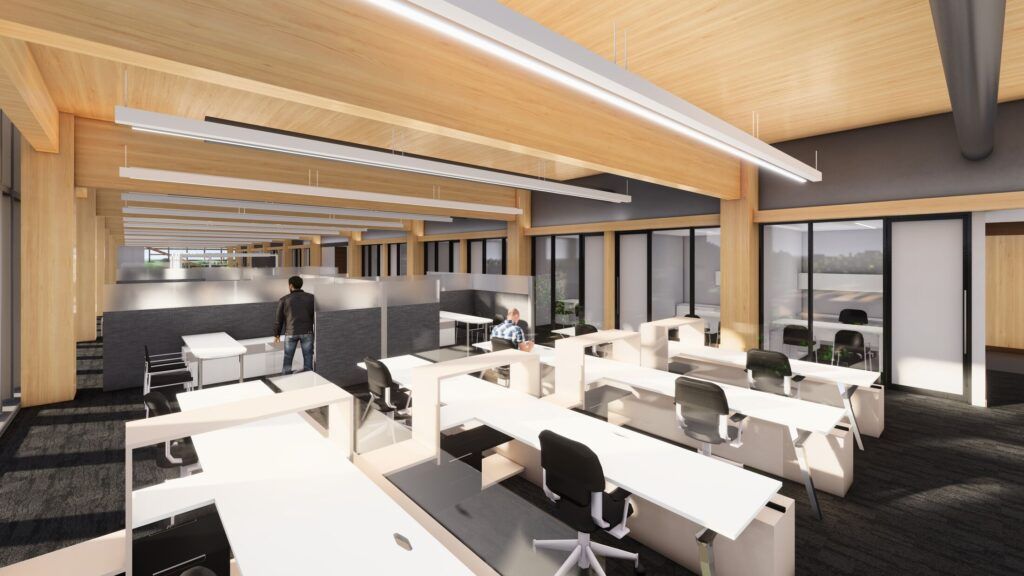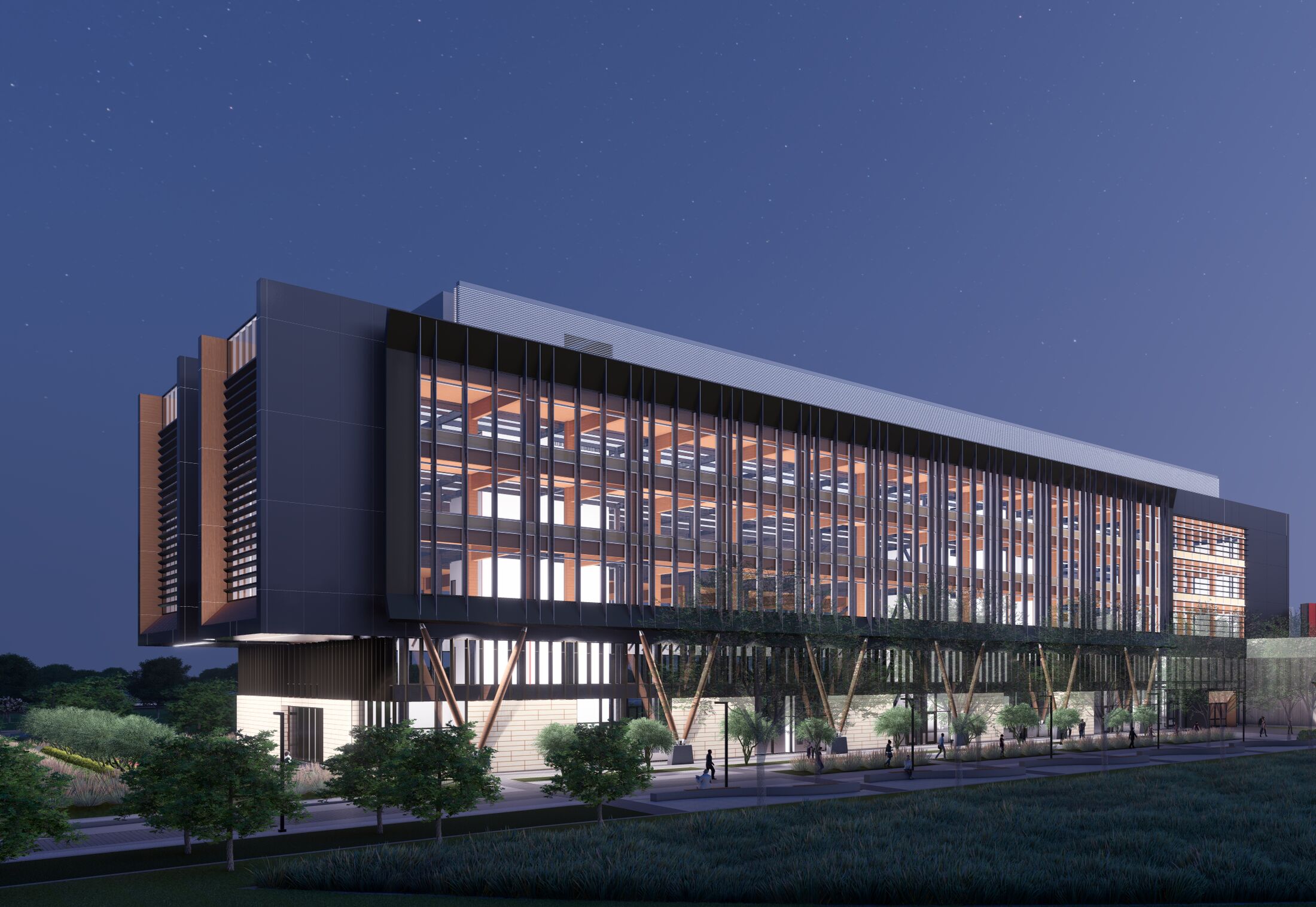State Emergency Operations Center & HQ
Texas Division of Emergency Management
Location: Austin, TX
Size: 273,000 GSF
Delivery Method: CMAR
Construction Type: New Construction




Challenge
The Texas Division of Emergency Management (TDEM) is a state agency tasked with the responsibility of disaster mitigation, response, and recovery to serve the people of Texas. Its existing facilities were woefully inadequate given the size of the state. Its Council Floor, the hub of its operations, could only seat 144 personnel, a significant deficiency even in “normal” disasters, and an insurmountable one during the COVID-19 response. The majority of TDEM’s headquarters staff officed at a leased multi-tenant building several miles away from the State Emergency Operations Center (SEOC). Recognizing these deficiencies, the state legislature authorized funding for a new headquarters campus on a centrally located 42-acre greenfield site in Austin, the state capital.
Solution
The new iconic, six-story state headquarters creates a highly visible Texas A&M University System presence in Travis County. At 273,000 SF, the building offers a significant amount of space to accommodate all TDEM headquarters staff as well as personnel from other emergency management partner agencies. Since flexibility is integral to TDEM’s operations, workspaces can be reconfigured as needed, and with the quick turn-around times critical for emergency response. The centerpiece of the building is the 15,000 SF council floor. The project includes the largest SEOC in the country and a 900-space parking garage.
A new 54,000 SF SEOC is hardened to sustain very high winds, and is supported by redundant and emergency power, a potable water supply, and overnight accommodations. Other high-tech spaces for SEOC support functions include the state watch room, a radio room, live recording studio, a GIS workroom, and a data center.
